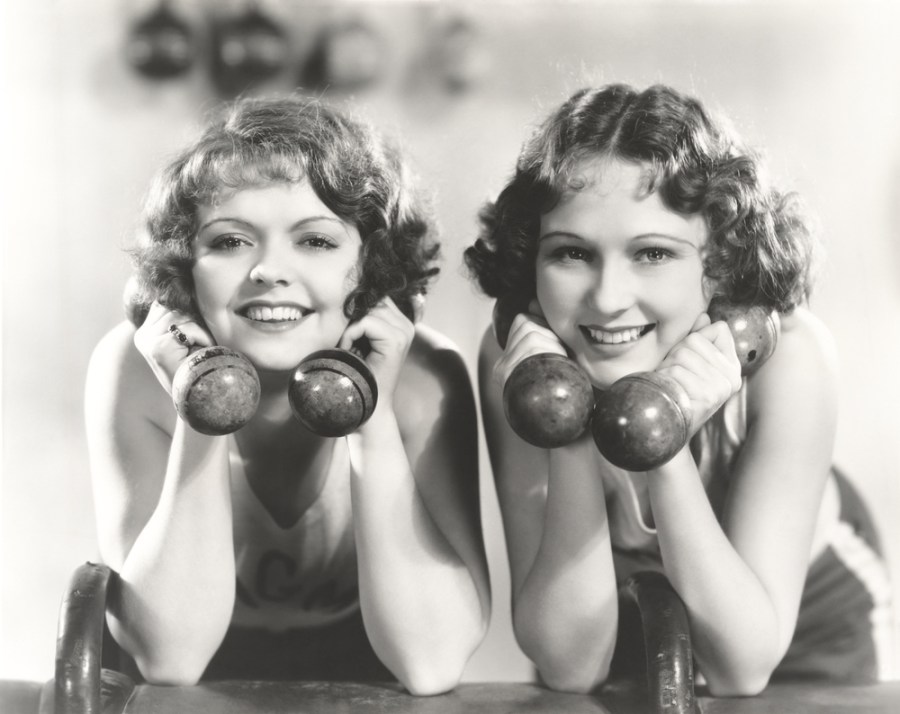Fitness trends come and go, with one form of exercise purported to be perfect for your health and waistline one minute, only to be superseded by something else before long. Performance coach Jeff Archer from wellbeing company The Tonic 365 looks at the changing fitness trends and weighs up the best options.
We’ve been looking at fitness trends across recent years and it’s been fascinating. Here at The Tonic (https://www.the-tonic.com), we’ve observed many fitness trends over the years, from the simplest health concepts to more creatively marketed ‘innovations’. One thing’s for sure when it comes to fitness trends, things are never dull! Most of the ideas will be familiar to you and you’ll probably have tried many of them. Lots have stood the test of time though some were so short-lived that you might even have forgotten that you ever gave them a go.
Following World War II, one of the first fitness trends to establish itself was stretching. Amazing that back then, with only common sense to guide people and limited research and media to distract them with too many options, they quickly understood the importance of what is still one of the most potent elements of any exercise and fitness routine. These days we may have to encourage stretching by disguising it within various new techniques or class titles but it’s good to know that the fundamentals of what’s important haven’t really changed.
With the 1950s came the craze for hula hooping; another workout format that still exists today; then, in the 1960s people began looking for lower effort ways to stay trim and the vibrating belt was born. This again is an approach that endures with a full range of belts to tone your abs available from many retailers.
In the 70s things really took off with Jazzercise, ballet fitness, Pilates, yoga and kickboxing, then the 80s gave us plenty of aerobics before the 90s brought us Tae Bo, spinning and many variations of martial arts, boxing and dancing fitness. The latter morphed into Zumba in the Noughties and for the last ten years we’ve had a massive boom in variations of all of the above as well as the rise of CrossFit, cycling, park run and obstacle races.
Staying in shape
The most striking observation is that at the heart of staying in great shape, the core principles always remain fixed. Move more and find activity that pushes you beyond your regular daily tasks; incorporate activities that address all areas of fitness including strength, cardio, core training and stretching; and seek out exercise that you’ll enjoy.
What does change is the ways in which ideas to work out are consistently redesigned and packaged up to both encourage as many people as possible to get involved and to keep people engaged for the long term.
One downside of every new fitness fad is that people get excited that (and are often told that) it will be an amazing, guaranteed, quick fix solution and, while this may be good to get people to try the activity, they soon give up when the quick fix isn’t as quick as they would like. They might move on to the next thing that catches their eye but the lack of consistency in their approach to exercise will soon leave them frustrated and demotivated.
Following a fitness plan
For those tempted to jump on board the latest exercise trends, it’s much better that they have an approach that selects the elements that actually work from each new technique they try and put together a customised plan that suits their needs and their lifestyle. So, although it might be tempting to continually overhaul your fitness routine based on what everyone else find exciting each month, the journey to on-going success could be simpler than this.
Those who have the best results in the short, medium and long-term are those who take a little time to research ways to get active that excite them, experiment with some of these based on their goals, cherry pick the bits that work best and then review and adapt their plan regularly. Small, consistent steps directed towards your personal goals always leads to the greatest success. This approach will take account of individual objectives, health issues, work and family situation and ideally will be gently flexed through life with no need for dramatic and time-consuming repositioning every few weeks or months.
Future fitness trends
There may be some surprises on the way but more than likely the future of fitness will be focused on further reimagined versions of things we’ve seen before. It’s all worth paying attention to in your quest to keep your workout regime relevant at all times and a few things you might want to pay particular attention to include:
Smart clothing
Vibrating techno gear containing sensors to give you feedback during your workout and help you maintain good posture and position.
HILIT: High Intensity Low Impact Training
A variation on HIT but with a blend of exercises that focus on minimising stress on your joints.
Live workout experiences
You may be home alone, but you need never be alone for a workout. Online group training exists for spinning, yoga, Pilates, circuit training and pretty much every type of workout you have access to in the gym or studio. Excellent for motivation when you’re not quite in the mood to exercise.
Community-driven fitness
Participating in group exercise from remote locations is definitely an asset as part of a flexible and time-efficient exercise routine but there will always be a desire for people to get together in person and there will undoubtedly be a continuing increase in the variety of options for different communities to come together in more places for an ever expanding selection of activities for all ages, abilities, interests, preferences and location.
Mindfulness fitness
The antidote to modern chaotic life in which we’re always on and always busy, practices that provide balance and a change of pace such as yoga, mindfulness, meditation, deep breathing will be more popular than ever.
Six of the most popular types of exercise
Functional training
Too often people spend lots of time and effort taking exercise that really doesn’t suit their goals or their personal situation. This means that all the valuable time they spend working out either may not lead to the results they’re looking for or, worse, they get injured. Training plans that focus specifically on your body and your objectives, be they everyday fitness or sport specific performance, will always be the most effective and time-efficient.
Circuit training
With an endless combination of workouts for the gym, park, home and including CrossFit, British Military Fitness and other brands, circuit training will always be a recipe for success. There are formats to suit all fitness levels, any available time slot and every imaginable location for a workout. Depending on your goals or your mood you can place the emphasis on strength, cardio, core or flexibility and there are hundreds of options for workouts for every stage of life.
Running
You can do it anywhere, explore new locations or run familiar routes, focus on every step or let your mind wander. You don’t need any kit, some people don’t even wear trainers, and it’s amazing therapy for body and mind. What’s not to like? If you’re not a lover of running don’t worry. If you ever fancy giving it a go, start by running very slowly and build up your distance very gradually.
Swimming
Aside from walking, this is the one form of activity that you can do practically all of your life. The recent trend is for outdoor wild swimming, but it doesn’t really matter where you do it, swimming is always a great boost for your physical and mental wellbeing.
Spinning
It seems that people who like spinning don’t just like it, they love it. Probably due to the format of the classes helping everyone tap into so far undiscovered levels of fitness leaving them full of endorphins and high on confidence and a great sense of achievement.
Yoga
It’s been around for more that 5000 years and there are now many approaches to yoga that you can try. Those who resist often do so due to inflexibility and claims of a busy stressful life. Exactly the audience who will benefit from some tried and tested approaches to help you stretch, breathe, relax and refocus. No, it’s not easy but regular, consistent practice will keep your body in balance and improve the effectiveness of every sport or activity you take part in.







